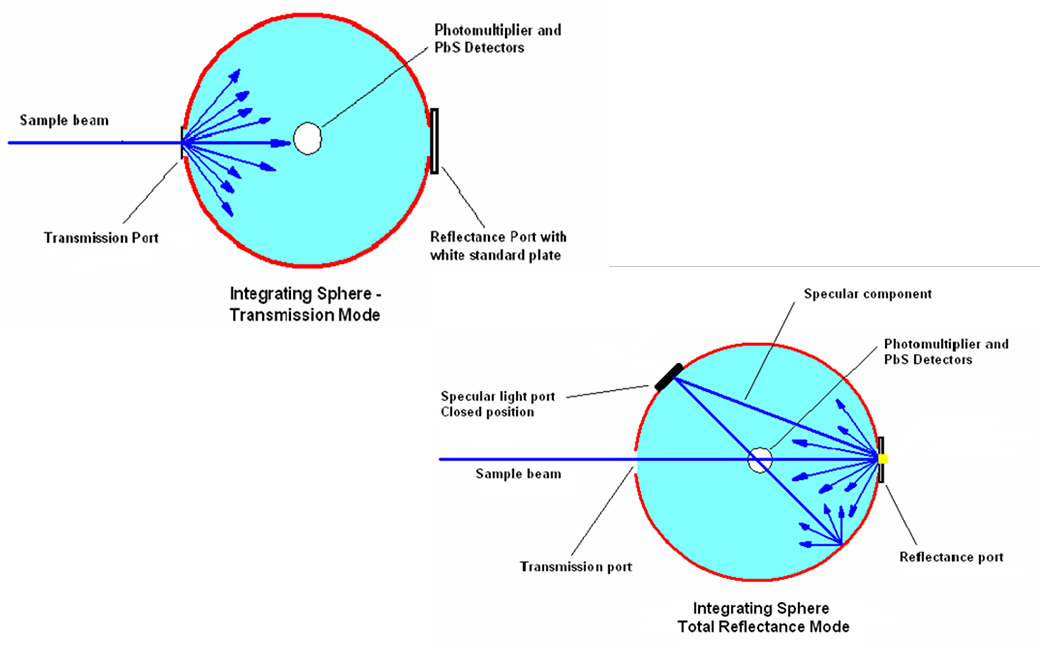How do integrating spheres work?

Note that in a typical scatter transmission measurement, only the transmitted and forward scattered light is collected by the sphere. The backward scattered (diffuse reflectance) light escapes collection. If both backward and forward scattered light need to be collected, then a center mount accessory can be employed. The center mount produces an absolute absorbance measurement and is very useful in measuring highly scattering or turbid samples on a 150 mm sphere.
With an integrating sphere, diffuse reflectance measurements can be made on opaque, translucent, and transparent samples (see picture above). Care must be taken with any sample that is not totally opaque. Sphere sample holders are designed to hold the sample against the reflectance port, so light from a non-opaque sample can pass through to be trapped and dispersed outside the sphere. It is very important not to place any material on the back of the sample, as this may cause an artifact due to a “double pass” through the sample which includes a reflectance contribution from the backing material. Spheres have the ability to measure total reflectance (specular plus diffuse components) or diffuse only reflectance. It is possible to subtract the diffuse from the total reflection to get an approximation of the specular component; however, a dedicated specular accessory will yield more accurate results. The primary utility of the diffuse only mode is to eliminate the specular gloss from a sample such as the quartz window on a powder cell.


